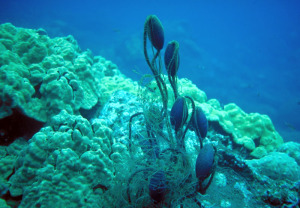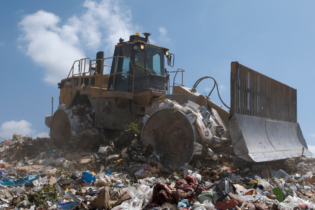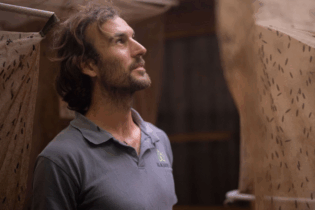Ghost fishing is an ever growing danger in our oceans. This occurs when derelict fishing gear that has been discarded, lost, or abandoned, continues to disrupt the natural environment. This gear continues to fish and trap animals, entangle and kill marine life. This is one of the main types of debris impacting the marine environment today.
The issue of “ghost fishing” was first brought to the attention of world at the 16th Session of the FAO Committee on Fisheries in April 1985. According to ‘A Review Of Ghost Fishing by Traps and Gillnets’, a paper written by Paul A. Breen, “An increasing proportion of fishing gear is now constructed from non-degradable materials such as stainless steel, other metals, fiberglass, injection-moulded plastics, vinyl-coated wire, monofilament netting, and polypropylene twine. Whereas fishing gear made from natural materials deteriorated quickly in the sea, while gear made from modern materials lasts much longer in the sea.” Large scale commercial fishing means more gear is lost at sea and more ghost fishing occurs. Where ghost fishing is believed to be a problem, methods to deactivate the fishing gear after an appropriate interval have been suggested. This includes the use of biodegradable twines in the framing of gill nets or in special panels in pots. However, ghost fishing may also occur due to other litter and debris in the ocean, and not just fishing gear. The potential impact on the environment is no small issue and this debris poses a serious threat to marine life.Solving the problem
Technology, such as improved GPS mapping of the ocean floor, could help make a difference the needless killing of fish and sea mammals through ghost fishing.To that end, over 40 delegates convened last year in Slovenia to launch the new Global Ghost Gear Initiative (GGGI). Bringing together NGOs, industry leaders and intergovernmental organizations, GGGI’s aim is to save one million marine animals by 2018. The cost in money and resources is too large to ignore. United Kingdom-based World Animal Protection estimates 640 000 tonnes of fishing gear, mostly plastic or nylon, are pitched into oceans annually.
These NGOs are dedicated to cleaning up the oceans, with some companies are collecting this garbage and recycling it into new products – but they are fighting a losing battle. The complex problem of ghost gear has many moving parts – and more cooperation is needed. Many estimates of ghost gear in the oceans, along with statistics covering wildlife killed annually, are based on samples taken in a few spots around the word. Business and governments, however, will want more concrete information before they commit resources to fight this continuing problem.








